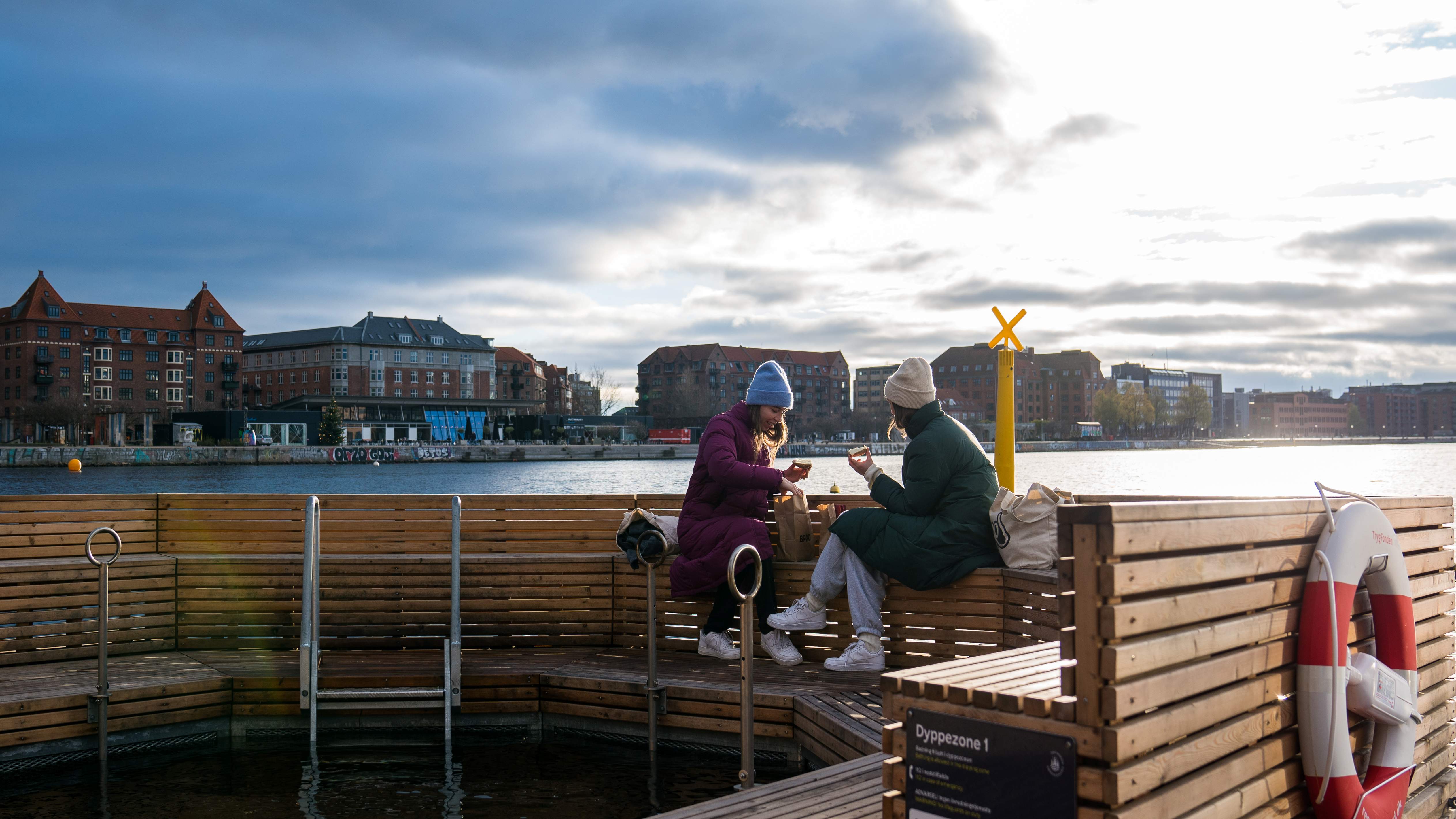Tourism, yes please – but on the locals’ terms
Tourism is coming in for increased criticism, especially in Spain, but also in other popular destinations like Amsterdam, Berlin and Venice. Unease about the number of tourists also exists in some places in the Nordics, and many are working on strategies for more sustainable tourism.
Recent years’ developments highlight the complexities of tourism. On the one hand, cities and countries compete to attract often big-spending tourists and meet their demands for hotels, food and exciting excursions.
Many places are dependent on tourism to survive. The pandemic demonstrated this clearly when pretty much the entire industry stood still with huge economic and employment consequences.
So no one was surprised when many in the tourism industry more or less shouted “come here!” when the pandemic and restrictions ended. After several years of isolation, many heard the call.
Today, there are more tourists than before the pandemic and in Sweden alone, the industry employs around 200,000 people. Tourism represented 10 per cent of the global GDP in 2023.
But there is also a flipside, which is demonstrated not least by increasing protests against tourism. More and more destinations are asking whether the crowds, littering, wear and tear – and, in the wake of it all, increasingly expensive housing – are really worth it.
As late as 18 May, there were major anti-tourism demonstrations in the Canary Islands. They were far from the first. There has long been criticism of crowds of temporary holidaymakers, but in the last five to six years this has grown in number and strength.
There have been reports of hunger strikes in Tenerife, demonstrations in Barcelona and protests in Venice, Amsterdam and Berlin, to mention some destinations.
“Anti-tourism demonstrations are always a current issue, especially in the tourist season. We see it especially in Spain, which has been a traditional tourist destination for many years, building much of its economy on tourism.
“The Tenerife hunger strike shows the level of desperation among those who have had enough of this development,” says Cecilia Cassinger, associate professor at the Department of Communication at Lund University.
Anti-tourism protests becoming a social movement
Cecilia Cassinger has been following the development of over-tourism for a long time. She has wanted to study the commercialisation of destinations and the consequences for a location when it suddenly becomes a commodity.
 “The anti-tourism protests increasingly look like a social movement and have become both more political and angrier. In Spain, the movement comprises many different interests that have joined forces.
“The anti-tourism protests increasingly look like a social movement and have become both more political and angrier. In Spain, the movement comprises many different interests that have joined forces.
“The criticism concerns both fairer working conditions in the tourism industry and the right to housing. These protests also show that locals are fed up with the economic model on which the tourism industry is based. Tourism has become a symbol for everything that is unfair, and serves as a way to make their voices heard,” she says.
In 2017, terms like overtourism and mass tourism began to gain traction. When people talk about overtourism, it is often about attractive city centres. The large numbers of visitors make the city environment overcrowded and the attractions have not had time to scale up to meet the many tourists’ needs for hotels, food and public transport.
The tourists are a strain on water resources, they need public toilets and sometimes healthcare. The locals' everyday lives are affected.
“Overtourism is when a destination does not have the capacity to handle large numbers of people, but it is also a lived experience. In Barcelona, there are streets where you can hardly move for the number of people who go there.
“In other destinations, like the worst party neighbourhoods of Berlin and Amsterdam, visitors come to party hard but briefly in small spaces, which leads to noise, fights and littering.”
The criticism is often focused on companies buying flats in attractive city areas to hired them out on platforms like Airbnb. This forces housing prices up, neighbours who live there permanently disappear and the traditional life of city centres changes.
Clothing, food and service outlets are being pushed out in favour of more profitable businesses that cater to the desires of tourists, like ice cream and souvenir shops.
Infrastructure is also put under significant strain and natural and cultural assets are threatened when the number of visitors exceeds expectations and preparations have not kept pace.
“Airbnb is a problem, with speculative investors buying up entire areas and then hiring out. It makes it unsustainable for those who live and work in a city and it is becoming increasingly common for cities to legislate for short-term rentals. It takes very little time to change a city centre,” says Cecilia Cassinger.
“Like living in an amusement park”
Cecilia Cassinger calls 2017 a “tipping point”. That is when awareness began to grow that it is often big companies that reap the benefits, not the local population. This led people to question tourism, which until then had been seen as something positive to strive for. That attitude is present to an extent.
“It’s two-sided. On the one hand, what does tourism really bring to the locals? Do local businesses gain enough for it to be worthwhile? On the other hand, many cities are completely dependent on tourists, also in Sweden.”
More and more destinations have begun talking about introducing a tourist tax and there are increasing demands that profits made from tourism should be reinvested, for instance to preserve undeveloped beaches, protect shared green spaces, safeguard coastlines and prevent freshwater shortages.

Cecilia Cassinger mentions, among other things, how Copenhagen has opened up its harbour for use by everyone, including tourists. Photo: Mellanie Gandø
But a tourism tax is not a straightforward solution either.
“Venice proposed to introduce a five euro tourism tax that would go to the municipality and therefore the citizens. This created enormous protest – ‘are we not worth more than that?’,” says Cecilia Cassinger.
“The protests are healthy and show that the issue engages people. Venice needs to reinvest to protect its cultural heritage and many felt a tourism tax of five euro would not solve this. Critical activists said they felt they were living in an amusement park, where the visitor pays for entry.”
The tourists' responsibility
Around 2017, people also started criticising tourists’ behaviour. The UN launched the campaign “Travel, enjoy, respect”. Amsterdam created its own, similar slogan. Many English tourists go there as day visitors. They fly in early morning and leave late at night.
Tourism becomes focused on just a few attractions or a day of partying for young people making their way through Amsterdam’s inner-city streets.
“Many more people are able to travel these days, and accessibility has increased. Criticism of tourism in popular destinations does not seem to have had a negative impact on these cities’ brands or people’s willingness to go there.
“They are tempted by cheap accommodation and a feeling that ‘everyone goes there’, which is often driven by social media and influencers,” says Cecilia Cassinger.
The many protests have had results. Amsterdam is now working to maintain a traditional city centre and has also created a beach outside of the city to get the tourists to do more than just visit Anne Frank’s house or wander around the red light district, which is part of the old city centre.
“The tourist has long been seen as a consumer with rights, but I believe we need to redefine what it means to be a tourist. I recently participated in a panel debate about tourism, it was said that it is equally important to talk about being a guest as being a host.
“As a tourist, you should think about what it means to be a good guest and what you can give back,” says Cecilia Cassinger.
So far, Sweden does not have many areas with overtourism, but the crowds in the middle age city of Visby in high season and in Stockholm’s Gamla Stan can grow big. Gamla Stan is working with sustainable tourism so that ordinary shops like grocery stores remain, but also kindergartens and other services that belong in a living neighbourhood.
“Due to climate change, the Nordics can also tempt more tourists to visit, but there are already strategies in place to create a different kind of tourism,” says Cecilia Cassinger.
She mentions Copenhagen as an example, where they work with the term “localhood”. The aim is to give tourists a sense of being part of the local community.
Attractive and accessible areas along the waterfront have been developed with swimming spots, playgrounds and food markets, encouraging many visitors to move beyond the main shopping street (Strøget) or a visit to “The Little Mermaid” and explore the city more broadly.
The Faroe Islands offer another example, where certain areas were closed off for a time and only accessible to tourists who were willing to work as volunteers and contribute to improving vulnerable natural environments.
How do you travel yourself? Have your insights into the downsides of tourism affected your habits?
Cecilia Cassinger pauses to reflect.
“Perhaps I’ve become more aware of behaving respectfully and being considerate of local life by choosing small-scale hotels, restaurants and guided tours. I want to show good manners and just be myself – the way I am at home,” she says.
- Protests
-
Barcelona is a city that has had considerable problems with overtourism for many years. Tensions increased during 2018 and 2019 with protests and anti-tourist graffiti. Photo: Billie Grace Ward/Wikipedia.
 Follow us on Facebook
Follow us on Facebook
